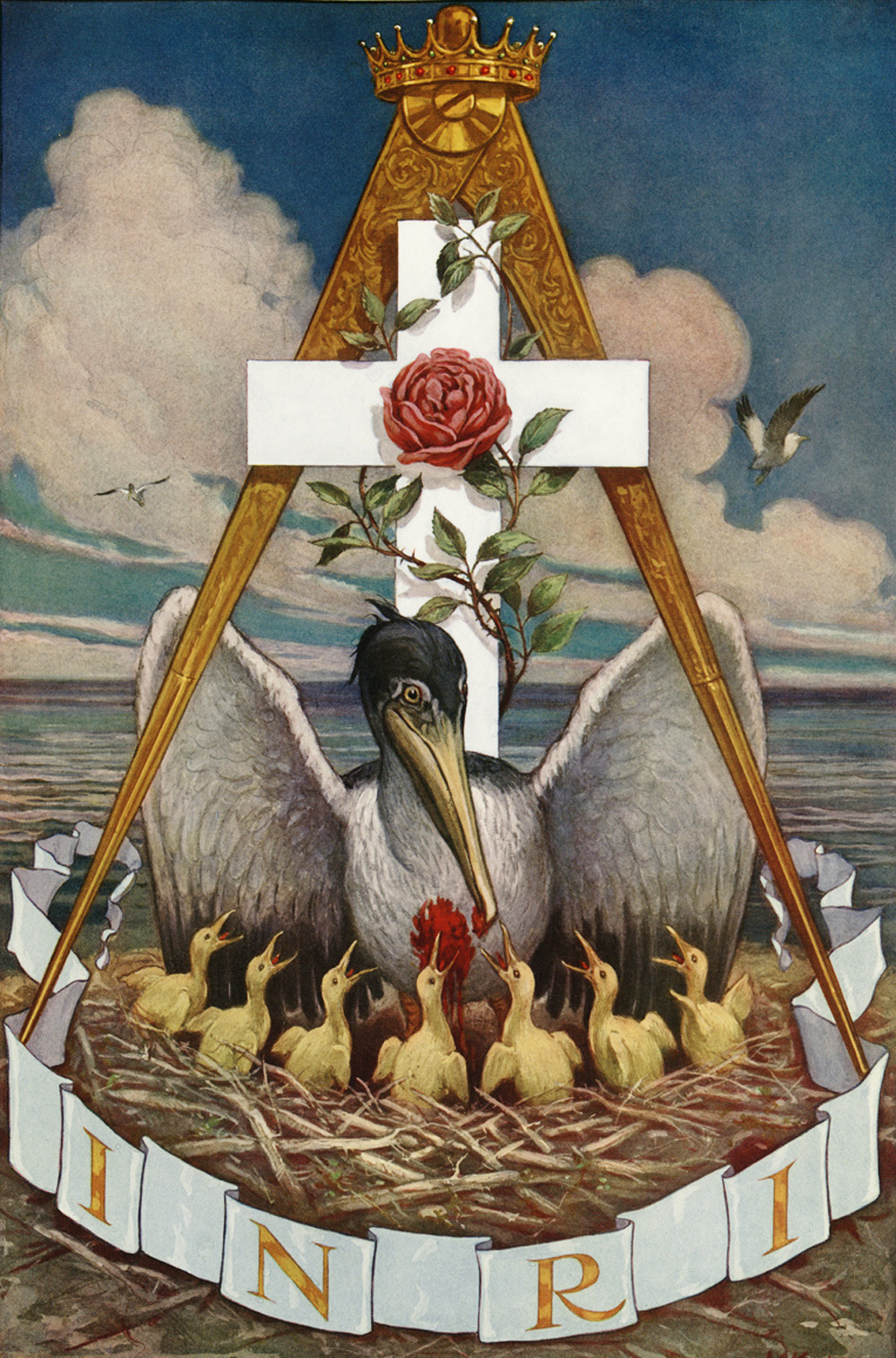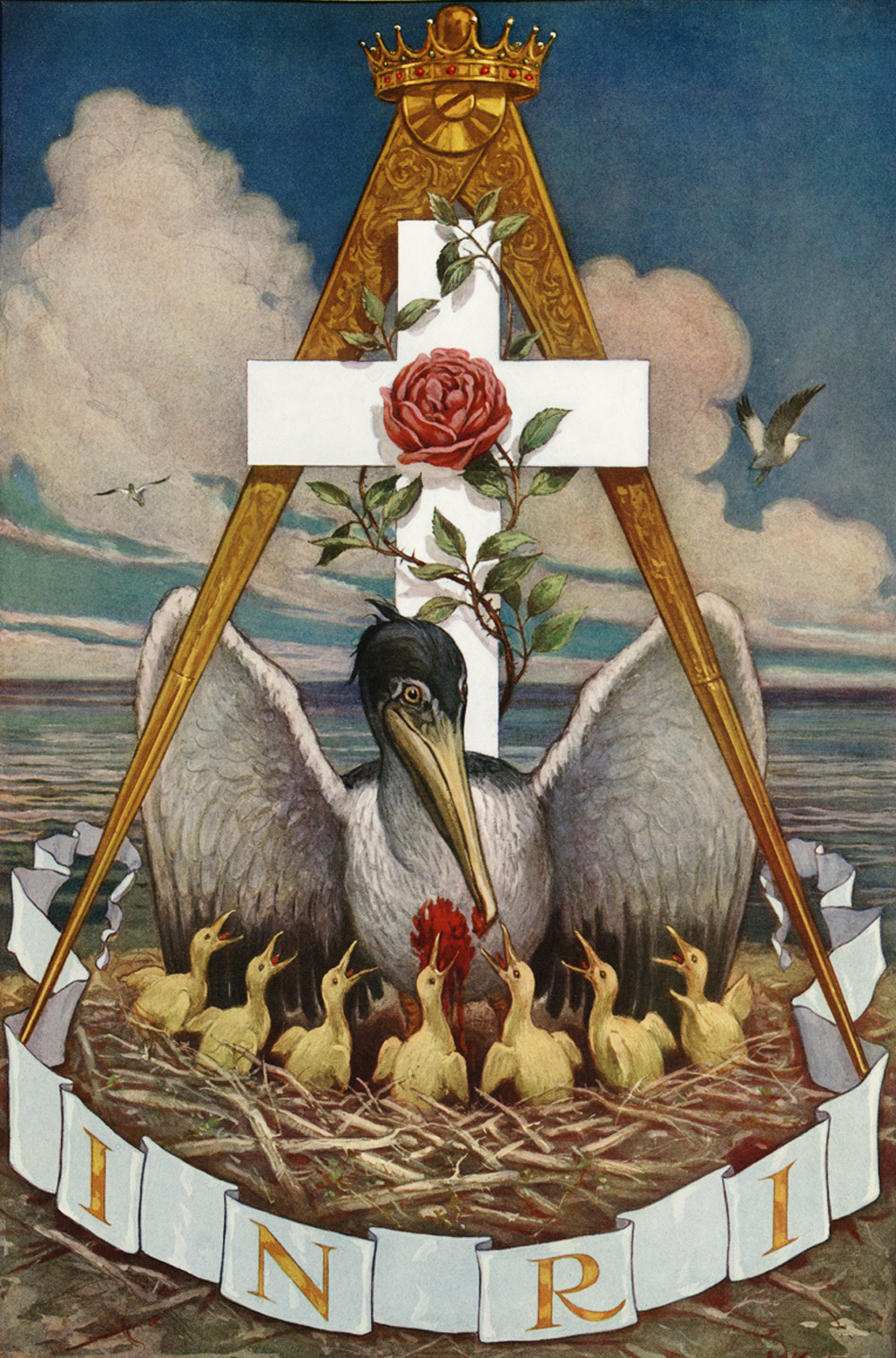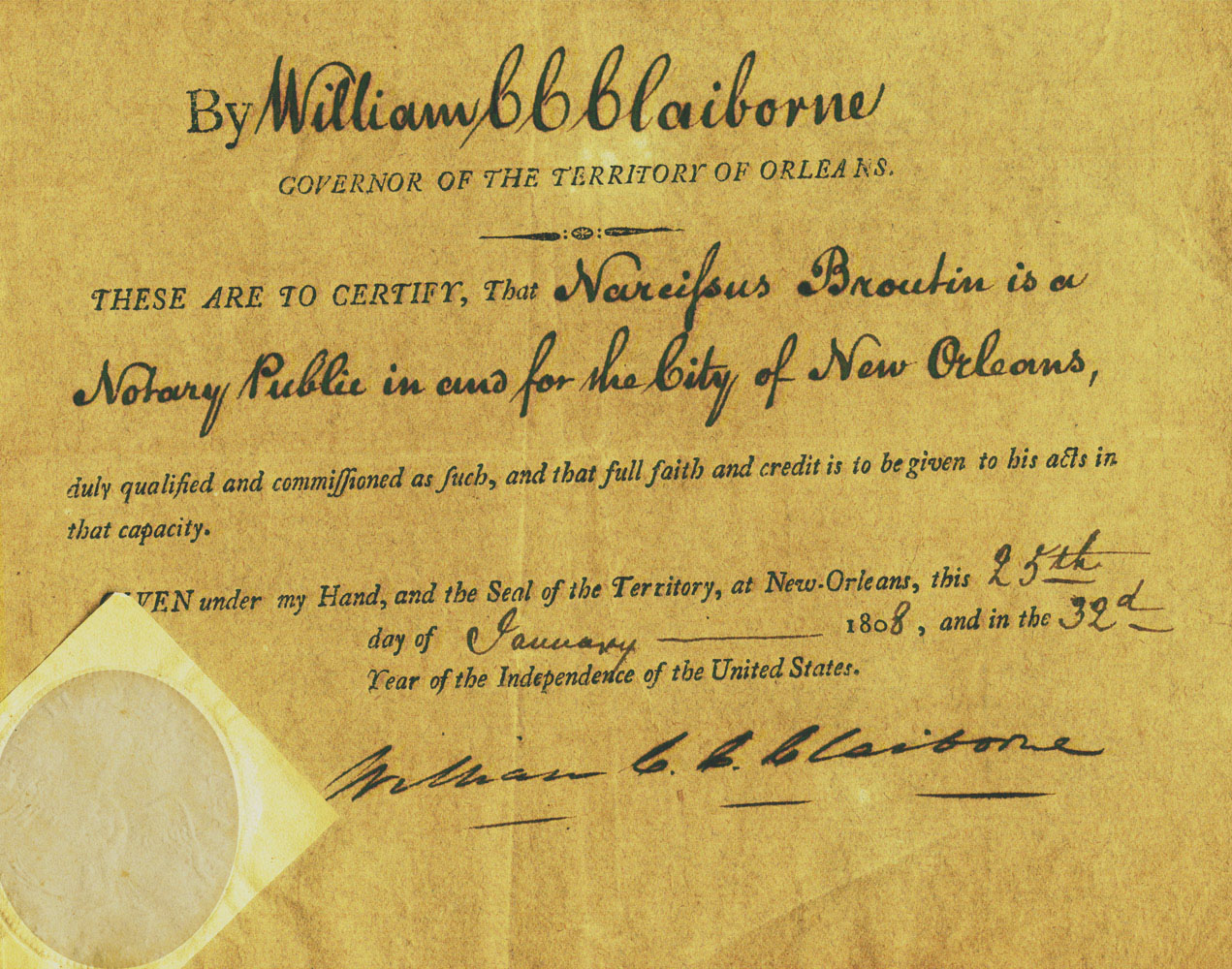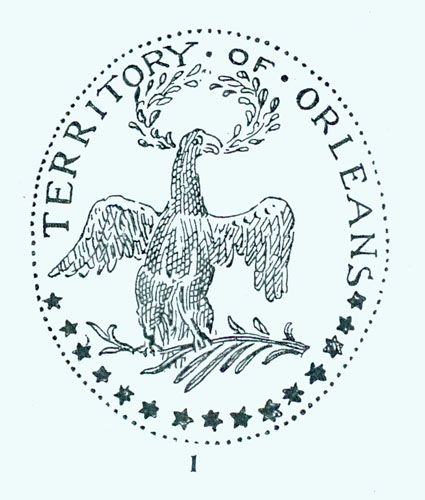
Signs and Symbols
Manly P. Hall. An Encyclopedic Outline of Masonic, Hermetic, Qabbalistic and Rosicrucian Symbolical Philosophy. San Francisco: H. S. Crocker Co., 1928.
LLMVC Acadia BF1411 .H3 1928 Oversize
The Order of the Rose Cross was one of the most famous secret societies of the Renaissance. According to legend, it was founded in the fifteenth century by a German mystic named Christian Rosenkreuz (whose name, in English, means “rose crossâ€). Rosenkreuz is said to have made a pilgrimage to the Middle East, where he studied mystical philosophy (possibly Sufism or Zoroastrianism). Upon returning to Europe, he founded a secret society to preserve ancient esoteric wisdom for those few who were able to appreciate and understand it.
Christian Rosenkreuz is now generally regarded to have been an allegorical rather than a real historical figure. Most scholars believe Rosicrucianism dates to the period of the Thirty Years’ War in the early seventeenth century, when many thought the Day of Judgment was near. Some regard the Swiss alchemist Paracelsus as the order’s founder. Others have suggested that the name Rosenkreuz was a pseudonym of Sir Francis Bacon.
Alchemy was central to Rosicrucian beliefs. One of the most common alchemical symbols was the pelican. As Manly Hall explains, “The pelican feeding its young from a self-inflicted wound in its own breast is accepted as an appropriate symbol of both sacrifice and resurrection. To the Christian mystic, the pelican signifies Christ, who saved humanity (the baby birds) through the sacrifice of His own blood.†To Rosicrucians, the pelican represented “one of the vessels in which the experiments of alchemy are performed and its blood that mysterious tincture [the Philosopher’s Stone] by which the base metals (the seven baby birds) are transmuted into spiritual gold.†The pelican was often shown under a “rosy cross†or “rose croix,†as seen here. Together, the pelican and the rose symbolize human and divine affection. The mother bird represents the love of the Creator, while the rose, a rearrangement of the letters of the Greek word eros (love), represents humans’ love for each other.
Narcissus Broutin Commission, 1808.
Misc. B.
The image of the pelican is a familiar one in Louisiana. In addition to decorating the state capitol, pelicans are found on the state flag, on the official state seal, and even on the LSU seal. Few people are aware, however, of the pelican’s symbolic significance and its roots in Renaissance occult philosophy.
When Louisiana became a U.S. territory in 1803, Governor William C. C. Claiborne chose an eagle for his official seal, seen here on a commission dated 1808. When the territory became a state in 1812, the eagle was dropped in favor of a pelican, “which had the reputation of tearing its breast to feed its young†and thus symbolized the state’s obligation to take care of its citizens.
The fact that the pelican was a religious symbol that was acceptable to both Catholics and Protestants may have been another reason for choosing it to represent Louisiana, which had one of the largest Catholic populations of any state. Whether early legislators were aware of the pelican’s connections to alchemy is not known, but we do know that Governor Claiborne, among other founders of Louisiana, was a Freemason. This secret society, which dates back to at least the fifteenth century, incorporated many of the tenets of Rosicrucianism. (Note the pair of compasses, a Masonic symbol, in the illustration in Manly Hall’s book.)
“In Masonic symbolism,†Hall writes, “the blood of the pelican stands for the Secret Work by which man is raised from the slavery of ignorance to the condition of freedom conferred by wisdom.†As an emblem of LSU, therefore, the pelican is also appropriate.
The Sunflower. Engraving from Erasmus Francisci, Ost- und West-Indischer wie auch Sinesischer Lust- und Stats-Garten. Nuremberg: J.A. Endters, 1668.
Rare G480 .F7 Flat
Manly Hall writes that the esoteric emblem shown here “represents a curious experiment in plant magnetism. Several plants were sacred to the ancient Egyptians, Greeks, and Hindus because of the peculiar effect which the sun exerted over them. As it is difficult for man to look upon the face of the sun without being blinded by the light, those plants which turned and deliberately faced the solar orb were considered typical of very highly advanced souls. Since the sun was regarded as the personification of the Supreme Deity, those forms of life over which it exercised marked influence were venerated as being sacred to divinity. The sunflower, because of its plainly perceptible affinity for the sun, was given high rank among sacred plants.â€



